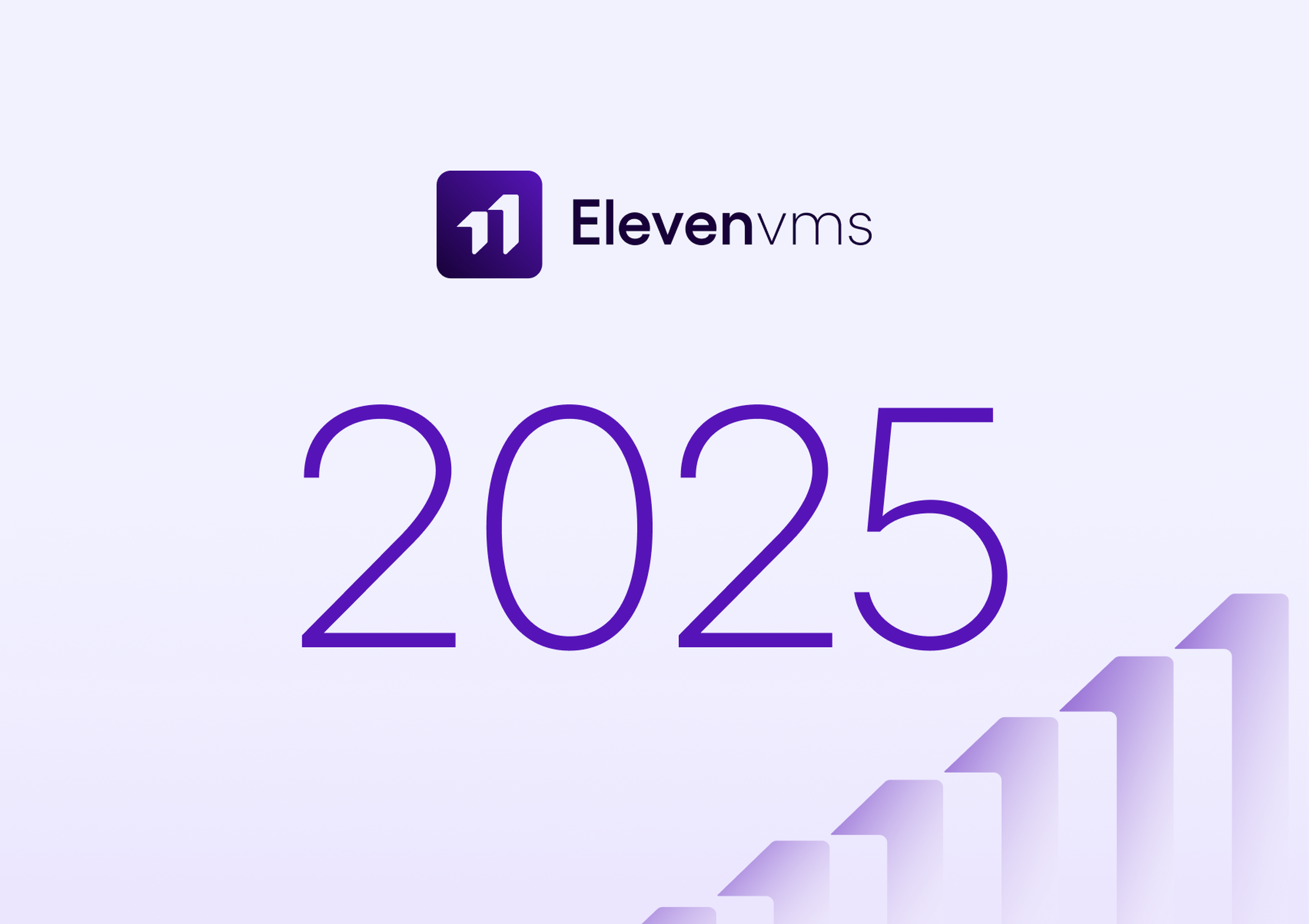In January 2025, Aymeric Hoepffner, PI & IT Buyer, shared his feedback on the deployment of the Eleven VMS solution. Six months later, he takes a step back and offers a pragmatic perspective on the concrete benefits observed since the implementation of the SaaS platform. Here’s his insight into the key contributions of the solution across the entire source-to-pay cycle.
1/ Unifying procurement processes
The first observed benefit relates to the harmonization of practices within the organization. Before implementing the VMS, each entity or site followed a structured but non-digital procurement methodology.
With Eleven VMS, all stages, from the initial expression of need to contract signing, have been centralized within a unified framework. This standardization laid the foundation for a shared procurement reference system, while also strengthening compliance and traceability from the very first steps of the source-to-pay process.
All users follow the same steps within a centralized tool. This ensures standardized practices, regardless of the site, department, or user involved.
2/ Operational simplification
Building on this harmonization, the solution has helped simplify the day-to-day operations of both requesters and buyers.
Thanks to an intuitive interface and well-defined workflows, service requests are now faster and more structured.
The specifications are guided, approvals are automated, and each step follows a clear process, greatly reducing bottlenecks and back-and-forth. This significantly improves the overall flow of the source-to-pay process.
Workflows are clearer, faster, and better structured, from the initial request to renewals. And all of it happens through a single interface.
3/ Enhanced traceability
The digitalization of procurement processes through the VMS has provided full visibility over the history of actions.
This traceability has become both a management asset and a risk mitigation lever in the event of disputes or contractual discrepancies. Buyers can quickly trace back to the origin of a decision or arbitration.
Every action is recorded, making audits, activity monitoring, and risk management easier. The VMS brings professionalism and fluidity to daily operations.
4/ Empowering requesters
One of the major shifts brought by the tool has been the evolution of the role of internal requesters. The VMS now allows them to initiate their needs independently, within a clear framework defined by Procurement. This empowerment enhances overall efficiency. Once trained, requesters can fully manage the operational steps of their requests from start to finish.
This autonomy has led to a significant reduction in the workload of procurement teams. By gradually eliminating a large share of repetitive tasks (follow-ups, multiple validations, document handling), the VMS has enabled buyers to refocus on high-value tasks.
The “buyerless” model truly takes shape here: procurement teams can finally concentrate on supplier strategy, spend management, targeted sourcing, and performance analysis. By freeing up time in the operational source-to-pay cycle, the VMS becomes a real lever for optimizing procurement resources.
The platform enables true autonomy for requesters. We've seen around an 80% reduction in buyer workload on requester demands once they master the platform. This frees up time for buyers to refocus on higher value-added tasks, such as supplier strategy or spend management.
5/ Continuous improvement through innovation
Beyond these structural gains, Aymeric highlights the ongoing functional innovations delivered through the tool. Some updates, such as the addition of a justification field in the statement of work or the integration of AI-based profile scoring, have simplified the daily tasks of users and approvers while improving the reliability of decision-making.
These features support a dynamic of continuous improvement. They make the tool increasingly intuitive while enhancing decision-making accuracy, particularly when selecting candidates for professional services engagements.
The AI scoring? It’s intuitive, quick to read, and above all, reliable. You can see that the selected profiles have a matching rate above 80%. The text pop-up even helps anticipate training needs, and most importantly, quickly highlights the strengths and weaknesses of each profile.
6/ Human support and ongoing follow-Up
Finally, Aymeric emphasizes the critical role of support in the project’s success. Beyond the technology itself, it was the involvement of the deployment and support teams that ensured a smooth adoption of the tool.
Regular KPI tracking, weekly check-ins, and a deep understanding of business challenges helped users build their skills and allowed the tool to be tailored to on-the-ground realities. This support (often underestimated) proved to be a key success factor.
What makes the difference is the quality of the human relationship. A good CSM is attentive, understands our business challenges, and acts as a true day-to-day partner.
There is also a genuine commitment to continuously improving the platform, reflected in the co-creation approach between Eleven VMS and its users. Feedback is not only heard, but often incorporated into the product roadmap. Some requested features have already been implemented, while others are currently in development. This ongoing follow-up demonstrates long-term support, built on a true dialogue between field teams and the product team.
In summary, deploying a VMS like Eleven has profoundly transformed the way professional services procurement is managed. Process structuring, operational simplification, requester autonomy, and a renewed focus for buyers on their core mission: all of these levers contribute to enhancing the overall performance of the source-to-pay cycle. For Aymeric, this marks a shift toward a more streamlined, more digital, and better-equipped organization to meet today’s procurement challenges.



